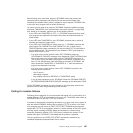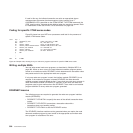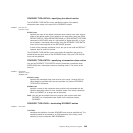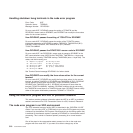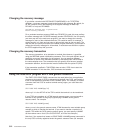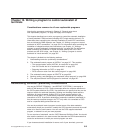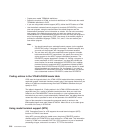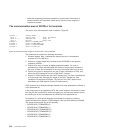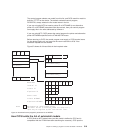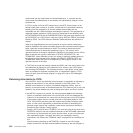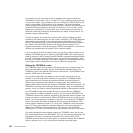
Chapter 10. Writing a program to control autoinstall of
terminals
Considerations common to all user-replaceable programs
Note that the comments contained in Chapter 5, “General notes about
user-replaceable programs,” on page 435 apply to this chapter.
This chapter describes how to write a program to control the automatic installation
of locally-attached VTAM terminals (including APPC single-session devices). For
information about controlling the automatic installation of local APPC connections
that are initiated by BIND requests, see Chapter 12, “Writing a program to control
autoinstall of APPC connections,” on page 543. For information about controlling the
installation of shipped terminals and connections, see Chapter 14, “Writing a
program to control autoinstall of shipped terminals,” on page 559. For information
about controlling the installation of virtual terminals used by the CICS Client
products and the 3270 bridge , see Chapter 15, “Writing a program to control
autoinstall of virtual terminals,” on page 567.
The chapter is divided into the following sections:
1. “Autoinstalling terminals—preliminary considerations.”
2. “The autoinstall control program at INSTALL” on page 517. This contains:
v “The communication area at INSTALL for terminals” on page 518
v “How CICS builds the list of autoinstall models” on page 519
v “Returning information to CICS” on page 520
v “CICS action on return from the control program” on page 523.
3. “The autoinstall control program at DELETE” on page 525.
4. “Naming, testing, and debugging your autoinstall control program” on page 526.
5. “The sample autoinstall control programs for terminals” on page 527.
Autoinstalling terminals—preliminary considerations
You use the DEFINE TERMINAL(..) and DEFINE TYPETERM(..) commands to
define VTAM devices to CICS. These commands define the resource definitions in
the CICS system definition file (CSD). Your definitions can specify that they can be
used as models for autoinstall purposes. Defining and installing model resource
definitions for terminal control enables CICS to create required entries in the
terminal control table (TCT) automatically, whenever unknown devices request
connection to CICS. A particular advantage of automatic installation (autoinstall) is
that the resource occupies storage in the TCT only while it is connected to CICS
and for a specified delay period after last use.
You use the autoinstall control program to select some of the data needed to
automatically install your terminals—notably the CICS terminal name and the model
name to be used in each instance. You can use the CICS-supplied autoinstall
program, or extend it to suit your own purposes.
For an overview of autoinstall, see the CICS Resource Definition Guide. You should
also read the sections in the same manual that describe the CEDA commands that
create the environment in which your control program can work.
If you choose automatic installation for some or all of your terminals, you must:
© Copyright IBM Corp. 1977, 2011 515



